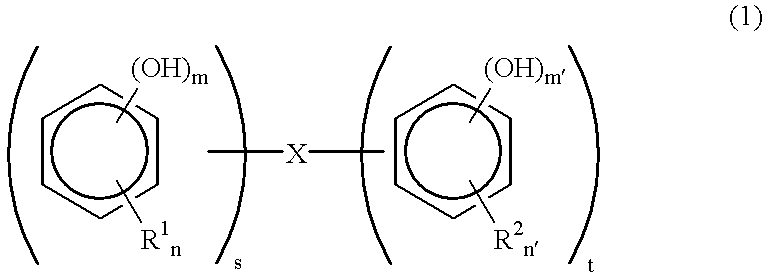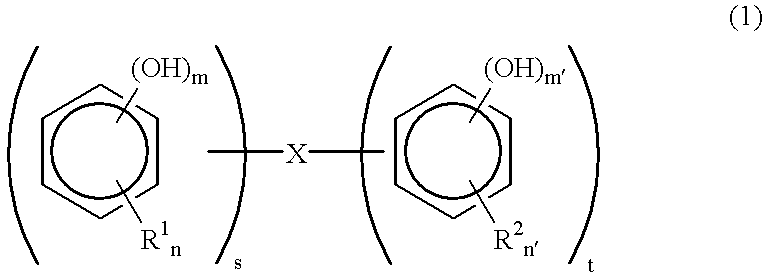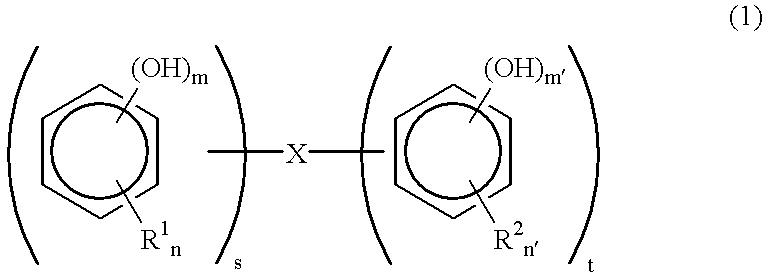Organohybrid-based damping material, method for producing the same, and damping improver for damping material
a technology of organic hybrid materials and damping walls, which is applied in the direction of non-rotating vibration suppression, animal husbandry, and group 4/14 element organic compounds, etc., can solve the problems of increasing the thickness or weight of the sound insulating wall of inorganic materials, high cost and special structural considerations, and materials with insufficient damping efficiency in a low frequency region
- Summary
- Abstract
- Description
- Claims
- Application Information
AI Technical Summary
Benefits of technology
Problems solved by technology
Method used
Image
Examples
example 1
A mixture of 30 wt. % of chlorinated polyethylene as the polymer matrix (hereinafter referred to as Matrix) and 60 wt. % of N,N-dicyclohexyl-2-benzothiazolysulfenamide as the material exhibiting piezoelectric, dielectric and electroconductive effects (hereinafter referred to as Additive 1) was first mixed by a two-roll mill at 40 to 60.degree. C. for 10 min. The mixture was then incorporated with 10 wt. % of 4,4'-Thio-bis(3-methyl-6-tert-butylphenol) having a molecular weight of 358.6 (hereinafter referred to as Additive 2), and well mixed at 70 to 90.degree. C. for 10 min. The mixture was preheated by a hot-pressing machine at 160.degree. C. for 10 min and molded under a pressure of 19.6 MPa (200 Kgf / cm.sup.2) for 10 min, followed by quenching into water to obtain a damping material sheet with a thickness of 0.5 mm. The damping properties were measured immediately after the mixture was molded. To check the composition effect on the damping, a series of samples were also prepared un...
example 2
A mixture of 30 wt. % of chlorinated polyethylene as Matrix and 60 wt. % of N,N-dicyclohexyl-2-benzothiazolysulfenamide as Additive 1 was first mixed by a two-roll mill at 40 to 60.degree. C. for 10 min. The mixture was then incorporated with 10 wt. % of 4,4'-Thio-bis(3-methyl-6-tert-butylphenol) as Additive 2), and well mixed at 70 to 90.degree. C. for 10 min. The mixture was preheated by a hot-pressing machine at 120.degree. C. for 10 min and molded under a pressure of 19.6 MPa (200 Kgf / cm.sup.2) for 10 min, followed by quenching into water to obtain a damping material sheet with a thickness of 0.5 mm. The damping properties were measured immediately after the mixture was molded. The evaluation results are given in FIG. 4 and Tables 1, 2.
example 3
A mixture of 45 wt. % of chlorinated polyethylene as Matrix and 45 wt. % of N,N-dicyclohexyl-2-benzothiazolysulfenamide as Additive 1 was first mixed by a two-roll mill at 40 to 60.degree. C. for 10 min. The mixture was then incorporated with 10 wt. % of 4,4'-Thio-bis(3-methyl-6-tert-butylphenol) having a molecular weight of 358.6 as Additive 2, and well mixed at 70 to 90.degree. C. for 10 min. The mixture was preheated by a hot-pressing machine at 120.degree. C. for 10 min and molded under a pressure of 19.6 MPa (200 Kgf / cm.sup.2) for 10 min, followed by quenching into water to obtain a damping material sheet with a thickness of 0.5 mm. The damping properties were measured immediately after the mixture was molded, and after the as-mold sheet was annealed at 50.degree. C. in a vacuum oven for several days. The evaluation results are given in FIGS. 4, 5, 6 and Tables 1, 2, 3, 4.
PUM
| Property | Measurement | Unit |
|---|---|---|
| tan δ | aaaaa | aaaaa |
| temperature | aaaaa | aaaaa |
| tan δ | aaaaa | aaaaa |
Abstract
Description
Claims
Application Information
 Login to View More
Login to View More - R&D
- Intellectual Property
- Life Sciences
- Materials
- Tech Scout
- Unparalleled Data Quality
- Higher Quality Content
- 60% Fewer Hallucinations
Browse by: Latest US Patents, China's latest patents, Technical Efficacy Thesaurus, Application Domain, Technology Topic, Popular Technical Reports.
© 2025 PatSnap. All rights reserved.Legal|Privacy policy|Modern Slavery Act Transparency Statement|Sitemap|About US| Contact US: help@patsnap.com



